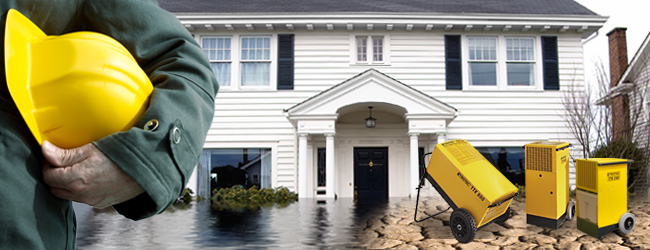
Damage caused by water is daunting enough – get all the help you can with the TTK building dryers from Trotec
It looked as though we were in for a super summer.
Temperatures soared and topped marks on the thermometer which we were only accustomed to being treated to on holiday, in places as magnificent and exotic as the Côte d’Azur, the Italian Riviera, or the Balearic Isles. 35 – 38 – even 40 degrees Celsius – were not uncommon!
The met office confirmed what we already knew: that we were in the grip of a heat wave and that this June was going to be one of the warmest on record.
Ice-cream, air conditioner – and beer – sales exploded. People stayed up late and sat outside pubs and cafes risking turning up at work bleary-eyed the next morning just to savour the Mediterranean feeling and make the most of the unusually beautiful weather.
And then the rain came.
Within weeks the picture was a totally different one. Now it was the rain that was splashed across the front pages and making the headlines. The people who had groaned collectively when they lay awake during the long, hot nights which robbed them of their sleep now had to decide which was worse – too much sun or too much rain.
For those who lived near certain rivers or in certain parts of the country there could only have been one answer. As river levels started to rise and dykes burst and freak flash floods swamped the regions which they lived in, the inhabitants of many German states, especially those which had already been hit by similar catastrophes in previous years, would have given everything to be able to decide.
As many people who have themselves been affected, or who have helped others when these have been hit by floods and high water, the scale of damage that the receding water levels leave behind is crippling, daunting and often heart-breaking. The frustration at perhaps having to start all over again is enough to drive the strongest of men to despair. Luckily for some the damage can be contained – either because the dams or sandbags held and the water was only able to seep into the cellars and lower-lying areas or other precautions were taken and furniture and valuables were moved to higher floors before the floods came.
And because the damage resulting from the masses of water could be significantly reduced and restored by using the right drying equipment.
Building dryers from Trotec are just one of many effective means designed to dry out homes and buildings after water damage. The professional building dryers in the TTK series are extremely robust and reliable units which have proved their worth in tens of thousands of scenarios throughout the country and across the whole of Europe. The range covers a selection of models each designed to deal with damage on a certain scale. The smallest model in the series, the TTK 200, for example, is a high-powered, highly-mobile unit that is excellently suited for drying out rooms up to 250 m³. The brilliant yellow building dryer is equipped with a powerful rotary compressor, an automatic hot gas defrosting system and large, non-marking wheels that allow you to manoeuvre the unit to wherever you want it.
Although the other models like the highly-versatile TTK 400, the TTK 800 powerhouse or the colossal TTK 1500 each have an operating range or an area of application for which they are best suited, they all have a number of things in common: high-quality components, excellent dehumidification values and drying results and a variety of useful functions and valuable features which have earned them the reputation of being the premium choice for small, medium and large-scale drying operations.
Trust in Trotec – the name in building dryers and machines and equipment for water damage restoration.


